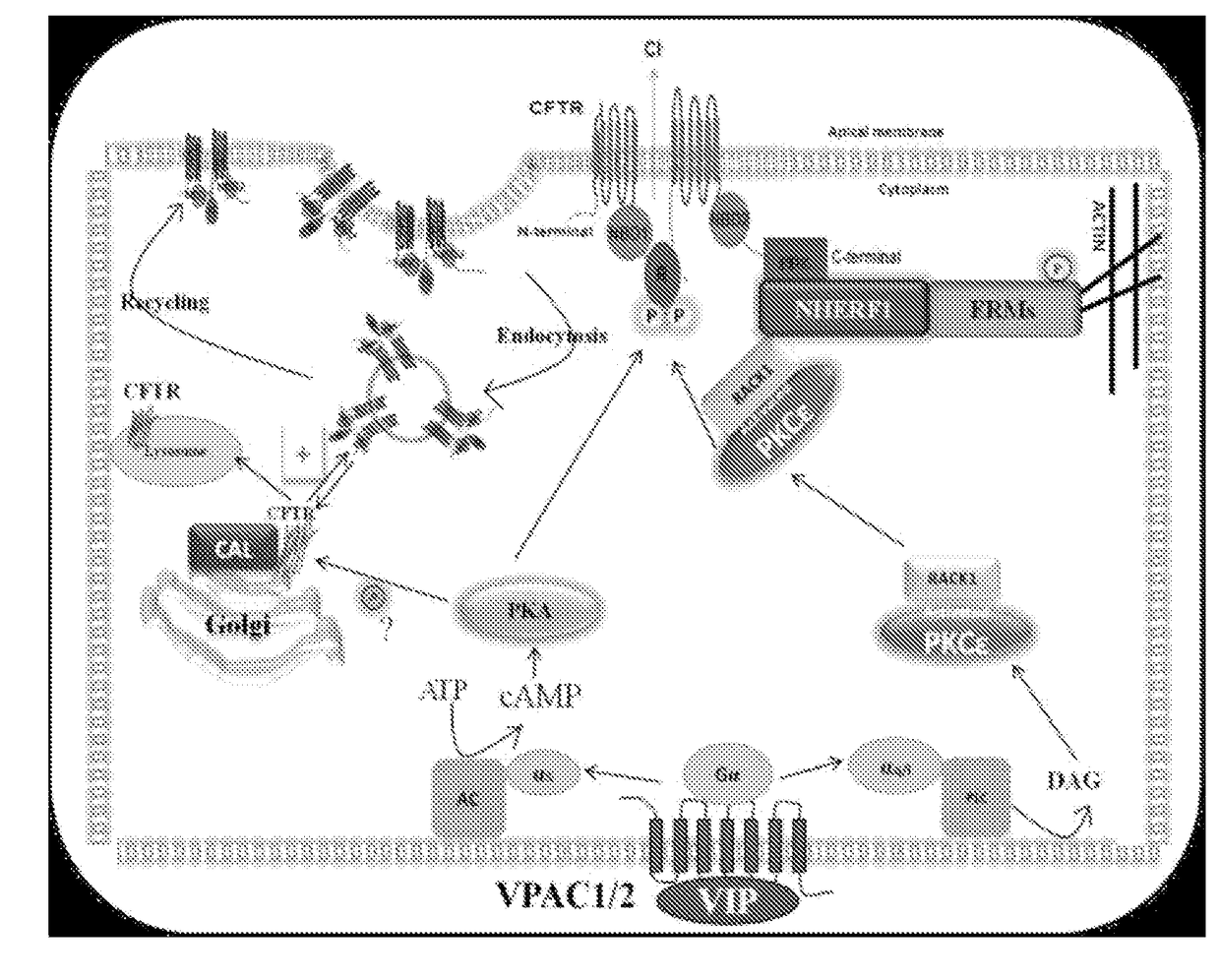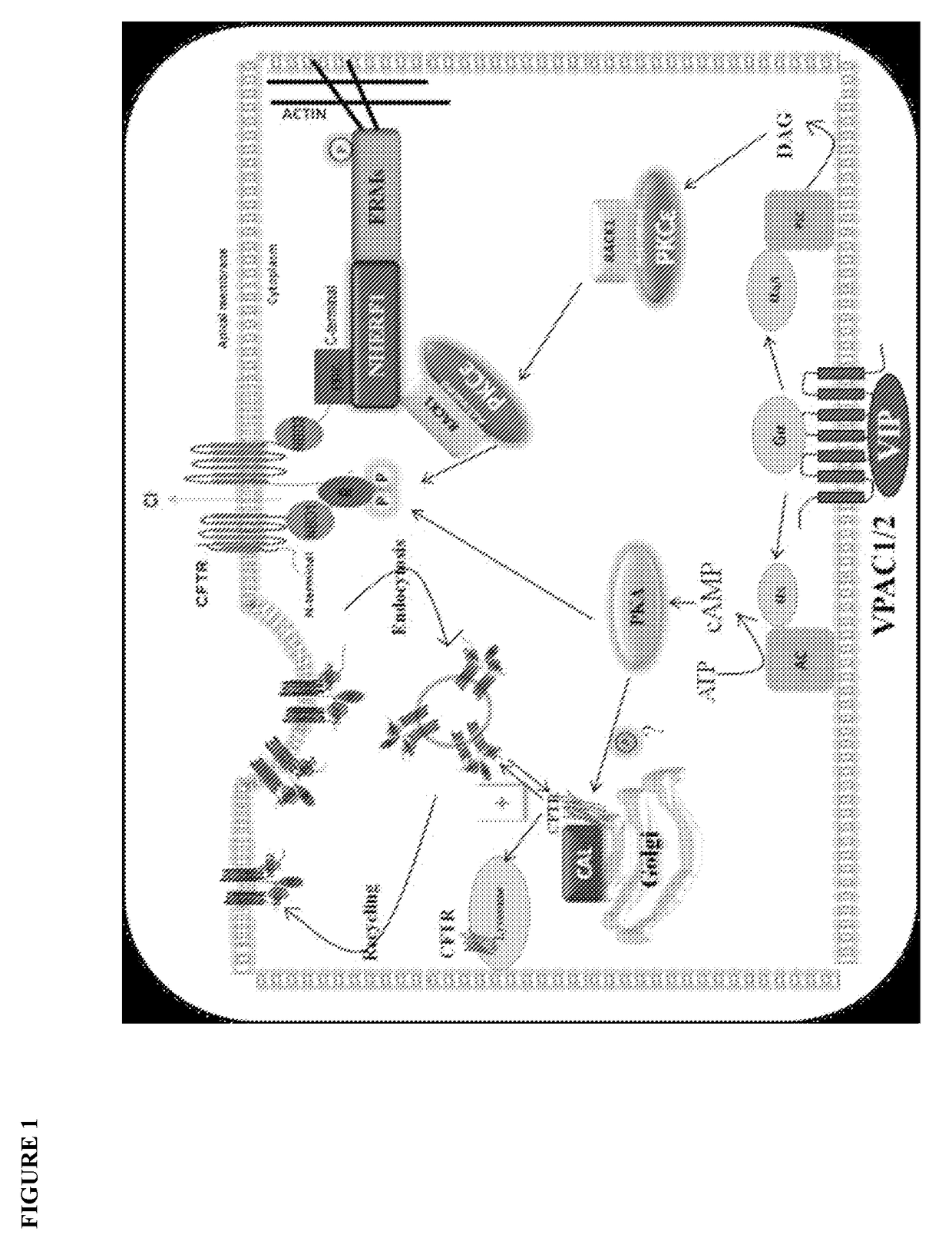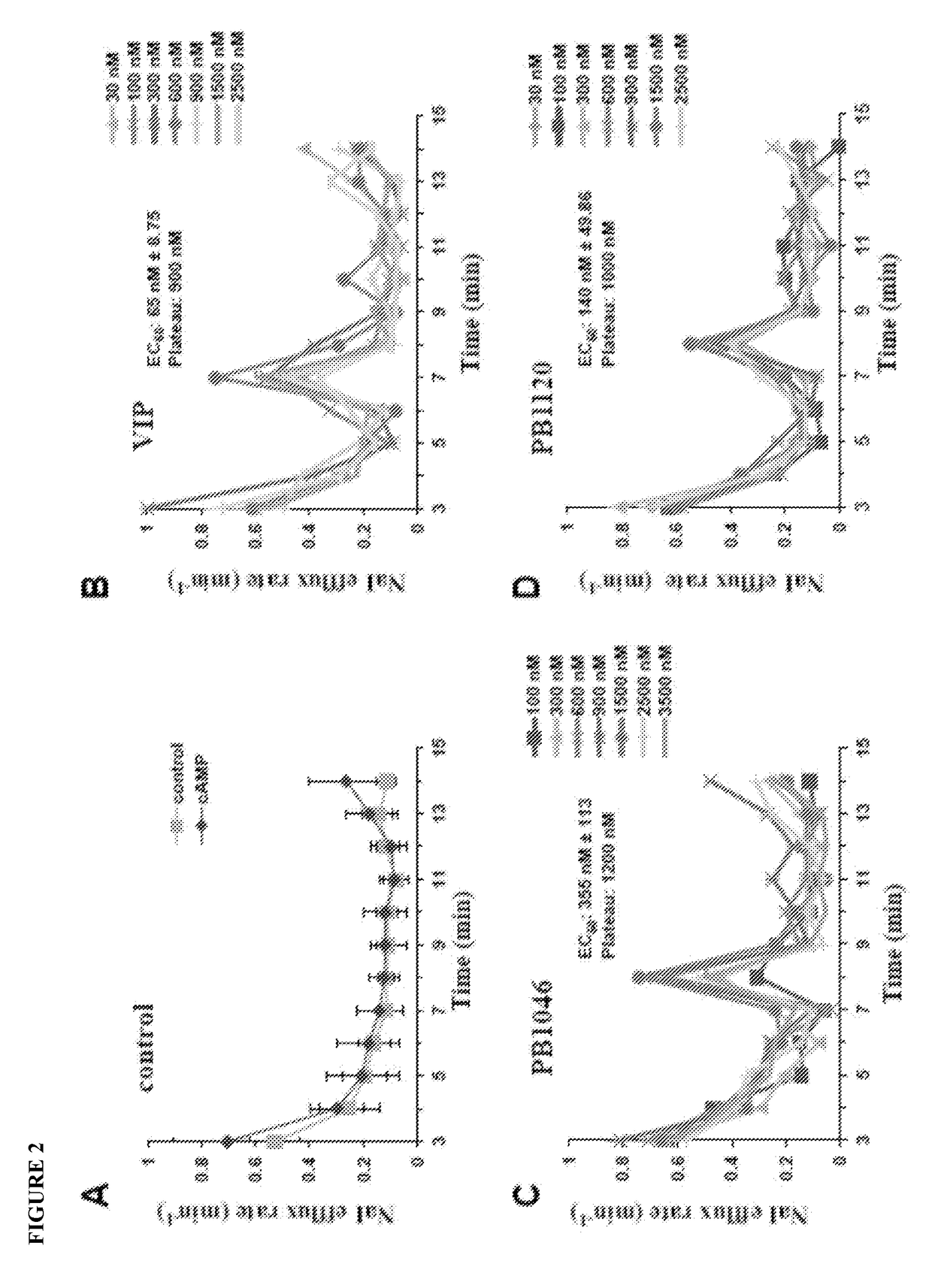Methods and compositions for treating cystic fibrosis
a cystic fibrosis and composition technology, applied in drug compositions, heterocyclic compound active ingredients, peptide/protein ingredients, etc., can solve the problems of scar tissue, severe patient impairment and death, permanent tissue damage, etc., and achieve the effect of increasing respiratory rate and increasing ion efflux ra
- Summary
- Abstract
- Description
- Claims
- Application Information
AI Technical Summary
Benefits of technology
Problems solved by technology
Method used
Image
Examples
example 1
ation of PB1046 or PB1120 rescues F508del-CFTR Function
[0124]Highly functional F508del-CFTR can be rescued in Cystic Fibrosis epithelial cells by correcting its misfolding to promote membrane targeting while increasing surface stability. While VIP has been shown to rescue this mutation in Cystic Fibrosis cells, the brief half-life of this protein in serum (≦1 minute) limits its therapeutic use. Disclosed herein are long lasting, stable VIP therapeutics, PB1120 and PB1046 which include ELP sequences. These data demonstrate PB1120 and PB1046 rescue F508del-CFTR.
[0125]A human nasal epithelial cell line JME / CF15, derived from a Cystic Fibrosis patient homozygous for the F508del mutation (Jefferson (1990)) was used to evaluate the effect of VIP compounds on CFTR protein function. Cells were cultured at 37° C. with at 5% CO2— 95% humidity in DMEM-F12 with 10% FBS and supplemented with transferrin (5 μg / ml), triiodothyronine (2 nM), insulin (5 μg / ml), hydrocortisone (1.1 μM), EGF (1.64 nM)...
example 2
stration of PB1120 or PB1046 with VX-770 or VX-809 has a Synergistic Effect on Rescuing F508del-CFTR Function
[0130]To study the effects of administration of PB1120 or PB1046 together with CFTR potentiators or CFTR correctors, iodide efflux assays were performed as described in Example 1.
[0131]JME / CF15 ells were acutely treated with 1 μM of the CFTR potentiator VX-770 (ivacaftor) and then treated with 350 nM PB1046 for 18 hours or 140 nM PB1120 for 24 hours. As shown in FIG. 6A, treatment with VX-770 alone demonstrated no effect on iodide efflux. However, when PB1046 or PB1120 were administered in combination with VX-770 synergistic effect on iodide efflux was observed (FIGS. 6B and C). This synergism is also seen when cells are treated with both 1 μM PB1120 and 1 μM VX-809 for 24 hours (FIG. 7).
[0132]All publications, patents, and patent publications cited are incorporated by reference herein in their entirety for all purposes.
[0133]This application incorporates by reference the fol...
PUM
| Property | Measurement | Unit |
|---|---|---|
| Concentration | aaaaa | aaaaa |
| Ratio | aaaaa | aaaaa |
Abstract
Description
Claims
Application Information
 Login to View More
Login to View More - R&D
- Intellectual Property
- Life Sciences
- Materials
- Tech Scout
- Unparalleled Data Quality
- Higher Quality Content
- 60% Fewer Hallucinations
Browse by: Latest US Patents, China's latest patents, Technical Efficacy Thesaurus, Application Domain, Technology Topic, Popular Technical Reports.
© 2025 PatSnap. All rights reserved.Legal|Privacy policy|Modern Slavery Act Transparency Statement|Sitemap|About US| Contact US: help@patsnap.com



